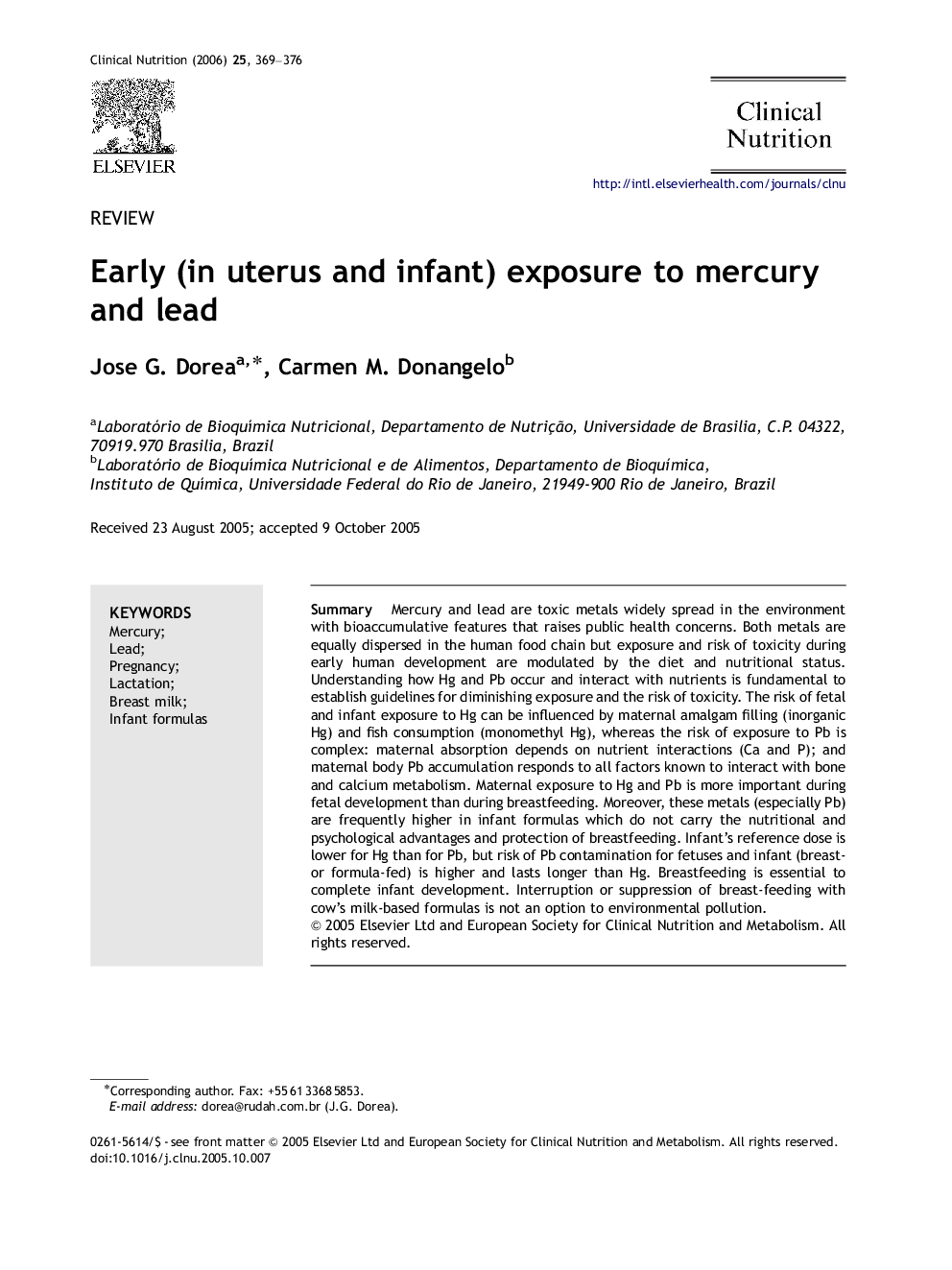| کد مقاله | کد نشریه | سال انتشار | مقاله انگلیسی | نسخه تمام متن |
|---|---|---|---|---|
| 2684537 | 1142756 | 2006 | 8 صفحه PDF | دانلود رایگان |

SummaryMercury and lead are toxic metals widely spread in the environment with bioaccumulative features that raises public health concerns. Both metals are equally dispersed in the human food chain but exposure and risk of toxicity during early human development are modulated by the diet and nutritional status. Understanding how Hg and Pb occur and interact with nutrients is fundamental to establish guidelines for diminishing exposure and the risk of toxicity. The risk of fetal and infant exposure to Hg can be influenced by maternal amalgam filling (inorganic Hg) and fish consumption (monomethyl Hg), whereas the risk of exposure to Pb is complex: maternal absorption depends on nutrient interactions (Ca and P); and maternal body Pb accumulation responds to all factors known to interact with bone and calcium metabolism. Maternal exposure to Hg and Pb is more important during fetal development than during breastfeeding. Moreover, these metals (especially Pb) are frequently higher in infant formulas which do not carry the nutritional and psychological advantages and protection of breastfeeding. Infant's reference dose is lower for Hg than for Pb, but risk of Pb contamination for fetuses and infant (breast- or formula-fed) is higher and lasts longer than Hg. Breastfeeding is essential to complete infant development. Interruption or suppression of breast-feeding with cow's milk-based formulas is not an option to environmental pollution.
Journal: Clinical Nutrition - Volume 25, Issue 3, June 2006, Pages 369–376